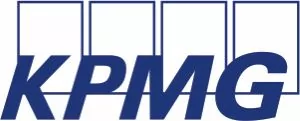- with Senior Company Executives, HR and Finance and Tax Executives
- with readers working within the Accounting & Consultancy, Consumer Industries and Law Firm industries
Introduction
Nigeria has grappled with sustained inflationary pressures in recent years, exerting widespread effects across all sectors of the economy. Based on the figures released by the National Bureau of Statistics, inflation has been in double digits over the past two years, averaging 25.5%. 1 Similarly, exchange rate volatility has been quite high with the Naira losing 50% of its value over the last five years. 2 Multinational enterprises (MNEs) and domestic groups are facing renewed pressure to align intercompany pricing with the arm's length principle in the wake of these persistent macroeconomic headwinds. Inflation can compress profit margins, disrupt cost structures, and undermine the relevance of previously established transfer pricing (TP) benchmarks.
The persistent nature of Nigeria's inflationary environment has created unique challenges that distinguish it from temporary economic shocks. Unlike short-term disruptions, sustained inflation fundamentally alters the economic landscape in which businesses operate, requiring comprehensive reassessment of TP strategies and long-term planning approaches.
This article explores the implications of inflation on TP in Nigeria and outlines how businesses can stay compliant in an unpredictable macroeconomic environment.
The Impact of Inflation on Intercompany Transactions
Inflation affects the cost of services, production, and capital as interest rates must reflect the economic cost of borrowing. In the context of TP, inflation can distort transfer prices by making historical benchmarks and comparables outdated. For instance, distribution companies, contract manufacturers or low-risk service providers that have historically targeted a specific profit margin which may have been easy to achieve in a low-inflation environment, may realize that these profit margins are no longer attainable due to the cost pressures created by high inflation. As a result, such companies may need to revisit pricing terms previously agreed with their related parties to maintain a reasonable profit margin in the current environment.
The cascading effects of inflation extend beyond direct pricing impacts. Raw material costs, labor expenses, and operational overheads all experience upward pressure, creating a domino effect throughout the value chain. This comprehensive cost inflation means that transfer pricing adjustments cannot be made in isolation but must consider the entire ecosystem of related-party transactions. For Nigerian businesses, this is particularly acute given the country's reliance on imported inputs, which face both inflationary pressures and currency depreciation effects.
Manufacturing entities face particular challenges as their cost structures include significant imported components subject to both inflation and currency fluctuations. Service providers, meanwhile, may find their fee structures inadequate to cover increased operational costs, particularly those related to technology infrastructure and skilled personnel retention in an inflationary environment.
In Nigeria, the interplay between inflation and exchange rate volatility is both pronounced and consequential. Therefore, in periods of sustained high inflation and exchange rate volatility, businesses that carry debt denominated in foreign currencies are particularly vulnerable. The interest payments on such financing arrangements can disproportionately affect their financial performance, especially when compared to revenues generated from local currency sales.
Companies with debt in local currency are not immuned to risk either, especially when their loans are tied to floating interest rates linked to benchmark indicators like the monetary policy rate. As has happened in Nigeria in recent times, central banks have commonly raised these benchmark rates as a strategy to combat rising inflation, which in turn significantly increases borrowing costs for these businesses.
Specific Transfer Pricing Risks in an Inflationary Setting
A major concern is the risk of TP adjustments as businesses with related-party transactions record losses which may be largely due to currency depreciation and inflation-driven costs and not the underlying related-party transactions. For example, target profit margins could become misaligned due to persistent losses which occur purely because of rising costs of other non-related party transactions, raising the risk of a TP audit and intense scrutiny from the tax authority.
Furthermore, for businesses with foreign-currency intercompany loans, traditional debt-to-equity ratios may become problematic as market borrowing costs surge due to exchange rate volatility. Companies may find themselves with intercompany loan arrangements that could potentially expose them to both primary tax adjustments and significant interest and penalty exposures.
In addition, high inflation introduces difficulties in benchmarking because multi-year comparables may no longer be reliable. As an illustration, consider a distribution company or a contract manufacturer that historically used three-year average operating margins from comparable companies to justify a five percent profit margin. In an inflationary environment, such target profit margins may become increasingly difficult to maintain despite keeping the cost of related-party transactions constant.
Documentation and Compliance Considerations
In periods of high inflation or significant exchange rate volatility, it is essential for businesses to conduct contemporaneous benchmarking and provide robust economic justifications for any deviations from target margins. Proactive documentation helps ensure transparency and defensibility in transfer pricing analyses.
Companies should incorporate a detailed assessment of foreign exchange and inflationary impacts within their local files, particularly when the functional currency of related-party transactions differs from the entity's reporting currency. For instance, a Nigerian subsidiary that reports in Naira but engages in Dollar-denominated related-party transactions should record both the original USD transaction value and the Naira equivalent at the time of booking. Any material exchange rate effects on profitability should be clearly explained in the TP documentation.
Additionally, businesses can evaluate changes in the volume or foreign currency value of related-party transactions over time. If these metrics remain relatively stable across both profitable and loss-making periods, this can support the argument that losses are not driven by related-party dealings.
To enhance the credibility of the local file, businesses can include a dedicated section that outlines the impact of exchange rate movements on year-over-year financial comparability and any adjustments made to normalize results for currency fluctuations. The documentation could also include contemporaneous evidence of independent party behavior in similar circumstances. This might involve gathering market intelligence on how unrelated parties have adjusted their pricing strategies in response to inflationary pressures, providing valuable benchmarking support for intercompany pricing decisions.
Companies should also implement dynamic TP policies that adapt to economic changes. This includes updating intercompany agreements, reassessing risk allocations, and engaging TP advisors. Where inflation distorts results, defensible adjustments and explanations must be documented. This proactive approach reduces audit risks and helps maintain tax compliance.
Conclusion
Documentation strategies must evolve to address the unique challenges posed by volatile economic conditions. Companies should maintain detailed records of the economic analysis supporting pricing decisions, including sensitivity analyses showing how different inflation scenarios would impact transfer pricing outcomes. This forward-looking documentation approach helps demonstrate to tax authorities that pricing decisions were made with full consideration of economic realities rather than as reactive adjustments.
Furthermore, the timing of transfer pricing adjustments becomes critical in high-inflation environments. Traditional annual pricing reviews may be insufficient, requiring more frequent reassessments to maintain compliance with the arm's length standard. Companies may need to implement quarterly or even monthly pricing reviews for certain high-volume or high-value transactions to ensure continued compliance with the arm's length principle.
Looking ahead, Nigerian businesses should view the current challenging economic environment as an opportunity to strengthen their transfer pricing capabilities and develop more robust, responsive frameworks that will serve them well regardless of future economic conditions. The investment in enhanced transfer pricing management during these challenging times will pay dividends through reduced compliance risks, improved operational efficiency, and greater strategic flexibility.
Footnotes
1. Meristem Research 'Macroeconomic Update Inflation Report' (meristemng.com)
2. FocusEconomics 'Nigeria Inflation' (Nigeria Inflation Rate: Forecast & Outlook - FocusEconomics)
The opinion expressed in this article is solely personal and does not represent the views of any organization or association to which the authors belong.



